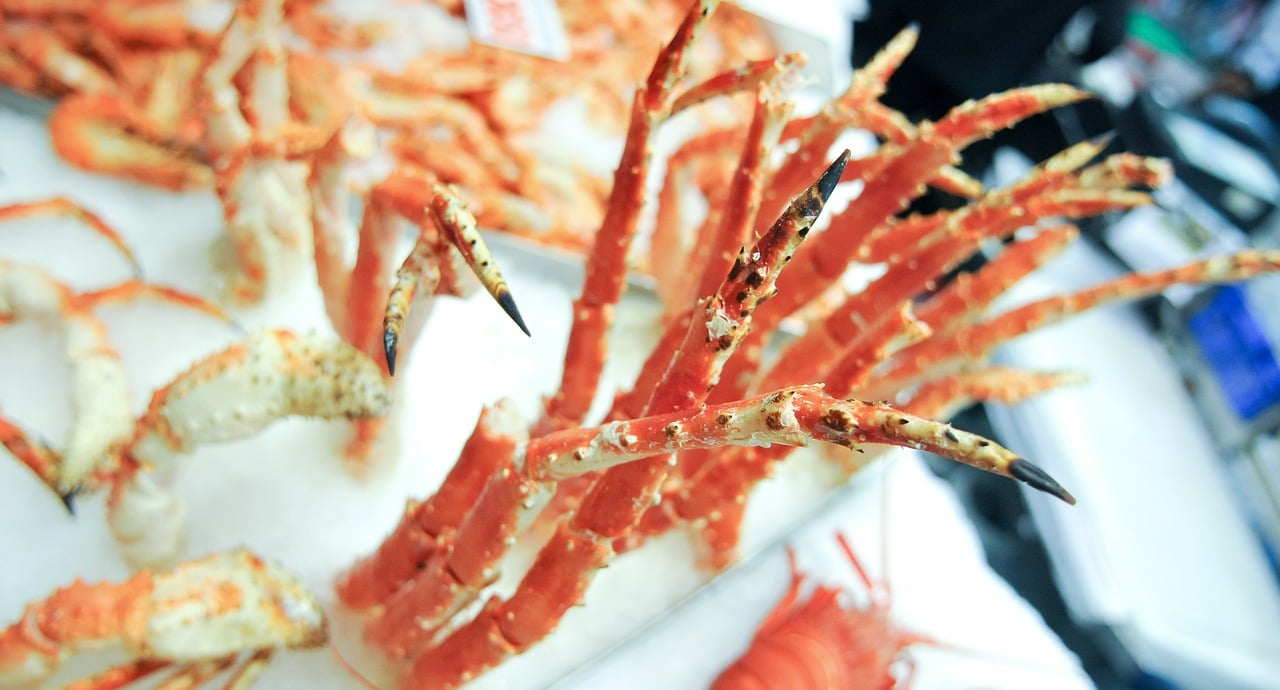In March of this year, social media users shared an image purporting that coronavirus in crab legs was discovered. News like coronavirus found in crab legs has hit seafood markets hard because no one wants to bring home a virus, especially if it is directly found in food. Is coronavirus in crab legs now? Let’s find out if corona-virus has indeed made the jump to human food.
In recent months, the seafood markets of various Asian countries have plummeted due to decreased demand and lower tourism in places like Singapore. The Chinese economy is so intimately linked with seafood that it is still feeling how it is being gutted by the onslaught of COVID-19, globally.
Will the coronavirus stay in crab legs?
There are currently no reports of COVID-19 being successfully passed on from commercial seafood products like crab legs to humans. The idea that COVID-19 can be passed on in this manner is probably derived from the fact that there was an expansion in infections in the Wuhan Seafood Market in China back in December.
However, the expansion of infections was not due to people buying seafood and consuming the seafood, but likely from being exposed to one another in the crowded market.
As we all know, crowded spaces can exponentially increase the risk of catching all kinds of human pathogens, not just COVID-19. A scientific team led by Dr. Yu Wenbin stated that the virus was introduced into the Wuhan Seafood Market from outside. It is unlikely that the virus originated from the Wuhan Seafood Market itself.
Subsequent explosions in infections were also linked to another seafood market (Huanan Seafood Market). Still, then again, the infections spread because the people were close together, and it would be easy to catch pathogens from surfaces and from the air itself since people are crowded in the seafood market.
The seafood being sold was not the source of the scourge. Another possible source of the false news about COVID-19 being able to live in commercial seafood products like crab legs is the fact that one of the major symptoms of COVID-19 is diarrhea and gastrointestinal unrest. These two symptoms usually emerge later on if the COVID-19 patient is not able to fight off the virus naturally.
The links to the stomach unrest may have inspired some people to guess that if you eat infected seafood, you will get diarrhea from COVID-19. This is untrue.
Diarrhea will and can emerge from direct transmission of the disease through hand to hand transmission or by being exposed to infected droplets from a carrier of COVID-19. Eating seafood or any kind of food has no connection with the gastrointestinal symptoms of COVID-19, and we shouldn’t spread this kind of news because it only confuses people even more.
Where does this message come from?
Again, the idea that seafood can transmit COVID-19 comes from the earlier news items suggesting that the epicenter of the outbreak of COVID-19 in China is the Wuhan Seafood Market. An easy association can be made between seafood and the disease, even if there is no scientific basis at all that the news is true. Additionally, people have become wary of buying food from crowded central city markets because of the uncertainty in whether the people selling fresh produce are taking the necessary steps to keep the fresh food safe from human pathogens. This is the reason why people are
What should we do to avoid eating other viruses or bacteria from crab legs?
Commercial seafood is generally considered safe. However, because seafood is quite perishable, there are some risks associated with consuming it, especially if it is not handled and prepared properly. Like other kinds of food, seafood can harbor bacteria, viruses specific to seafood (not COVID-19), and toxins that can cause disease. There is also a risk of chemical contamination, especially now that our seas are filling up fast with garbage and industrial waste. Some seafood products post more risks than others.
Keep in mind that all kinds of seafood already have a bacterial load due to their environments before harvesting and during processing. When the bacteria gets out of hand, that’s when toxic food poisoning can occur. Human pathogens, or pathogens that can attack human organ systems, are our primary concern. The following guidelines can help reduce the risk of illness after consuming seafood that you have prepared at home:
- Seafood needs to be frozen below 40º Fahrenheit to remain safe for consumption. Do not put seafood in the refrigerator for days, as this will cause bacteria to proliferate in the seafood tissue. Seafood needs to be iced at the very least or frozen. Freezing is the best way to preserve seafood and meats.
- Cooked and raw seafood products cannot be placed in the same holding area. They need to be stored separately. The reason for this is that juices from seafood may contaminate cooked seafood, even if they are both inside the freezer. Cross-contamination is a big issue in commercial food safety. This applies to all kinds of food as well. You can’t store cooked beef and raw beef in the same container or space, either. This is a recipe for disaster, even if both types of meat are frozen for the time being.
- Wash your hands thoroughly before and after handling fresh or frozen seafood. Use an antibacterial soap each time, and rinse your hands thoroughly as well to get rid of any bacteria or viruses that may have clung to your skin while handling seafood.
- The minimum internal temperature for cooked seafood is 145º Fahrenheit. This can be attained by placing seafood in a pan for at least 15 seconds, assuming that the seafood has been thawed out properly before cooking. Seafood can be cooked frozen, but this will mean that you will cook the seafood longer because you need to attain the internal temperature of 145º Fahrenheit before it can be served to anyone.

